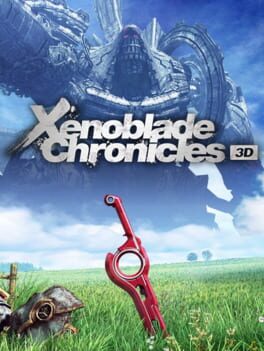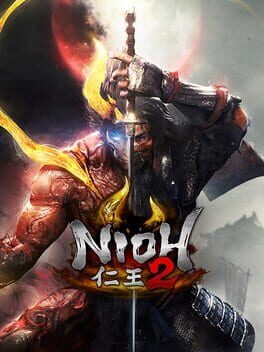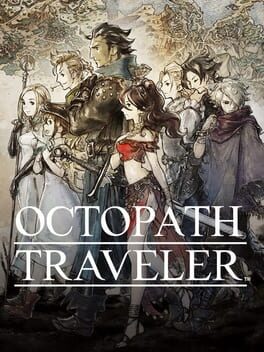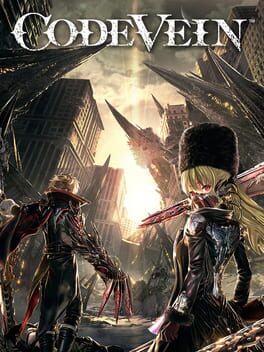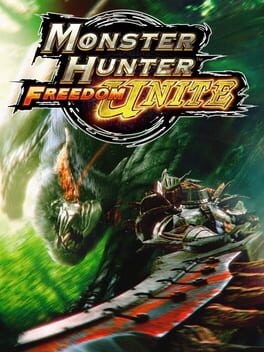Darab
2020
the ki pulse and stance mechanic make this game's combat very interactive and fun, but it's mired by the subpar bosses and absolute slog of levels they throw at you.
i will say though the mission "The Sun Sets on Mount Tenno" had this one section where you would try to shoot down enemies higher up on a rice field, but the sun behind makes it hard to see them. very cool.
i will say though the mission "The Sun Sets on Mount Tenno" had this one section where you would try to shoot down enemies higher up on a rice field, but the sun behind makes it hard to see them. very cool.
2018
2019
when i play this game i imagine the devs in an underground bunker, sitting around a table laughing like maniacs and twirling their moustache. this game has the most antagonistic level design, it's like the devs played the souls games and thought that it was popular because it was "hard". sure, let's just place a random hole at the top of a set of stairs and laugh when they fall. you're not teaching the player to be cautious around suspicious areas, you've just pranked them
a classic that every monhun fan should try at least once. while evidently different from modern incarnations, it is at its core about hunting monsters. you have no special skills, you don't have fast travel, and you always flex when you drink a potion. this game pisses you off, and to overcome it requires careful preparation and mastery of the game.
pokke village forever
pokke village forever
2022
This review contains spoilers
Of Miyazaki's catalogue, the most tight and well-thought gameplay can be found.
Like the souls games, the combat is built on a foundation of memorising attacks and the mechanically skill to exploit them. In Sekiro, however, the balance between risk and reward is perfect. The gameplay loop of deflecting every attack through carefully timed blocking and then countering with a few R1s is misguided. Rather, deflecting should be thought of as the "baseline" for winning an exchange. If you succeed, your posture is unaffected, and you do a little posture damage to the enemy. If you fail, your ass is probably on the ground. High risk, low reward.
The game gives you the prosthetic tools and combat arts to turn every exchange in your favour. Every player quickly realises the importance of the Mikiri counter (which, to be honest, should not even have to be unlocked), but almost every boss is made easier through tools. Throw a shuriken at Lady Butterfly when she jumps up. Umbrella up when Demon of Hatred jumps on you. Mist Raven behind Isshin instead of trying to time his unsheathe attack. Mix in some of the combat arts if you find the chance (mortal draw baby). Each of these options are easy to perform compared to the incoming deflect mini-rhythm game. Even better, combat arts usually do health chip no matter what, and most tools come with a combat art follow-up which make health damage pretty much guaranteed.
Speaking of which, the health system is usually misconceived as well. It's not an auxilliary mechanic to forgive you for messing up, it's THE mechanic to allow you to complete the enemy's posture bar. Health damage is strictly superior to posture damage, since it reduces the posture damage required -- turn it around, and you can think of it as posture damage in the future. It's not stupid when you walk into a boss, deflect it perfectly 10 times, fail the 11th, and the boss' posture resets. It's because you've ignored a whole other bar.
At its core, Sekrio's combat is the closest Miyazaki's games have come to rewarding experimentation and strategy. Other souls comparisons are warranted (and inevitable), and while Sekiro certainly hasn't fixed every problem, it iterates on the "dodge roll, attack" loop in a rewarding way.
Like the souls games, the combat is built on a foundation of memorising attacks and the mechanically skill to exploit them. In Sekiro, however, the balance between risk and reward is perfect. The gameplay loop of deflecting every attack through carefully timed blocking and then countering with a few R1s is misguided. Rather, deflecting should be thought of as the "baseline" for winning an exchange. If you succeed, your posture is unaffected, and you do a little posture damage to the enemy. If you fail, your ass is probably on the ground. High risk, low reward.
The game gives you the prosthetic tools and combat arts to turn every exchange in your favour. Every player quickly realises the importance of the Mikiri counter (which, to be honest, should not even have to be unlocked), but almost every boss is made easier through tools. Throw a shuriken at Lady Butterfly when she jumps up. Umbrella up when Demon of Hatred jumps on you. Mist Raven behind Isshin instead of trying to time his unsheathe attack. Mix in some of the combat arts if you find the chance (mortal draw baby). Each of these options are easy to perform compared to the incoming deflect mini-rhythm game. Even better, combat arts usually do health chip no matter what, and most tools come with a combat art follow-up which make health damage pretty much guaranteed.
Speaking of which, the health system is usually misconceived as well. It's not an auxilliary mechanic to forgive you for messing up, it's THE mechanic to allow you to complete the enemy's posture bar. Health damage is strictly superior to posture damage, since it reduces the posture damage required -- turn it around, and you can think of it as posture damage in the future. It's not stupid when you walk into a boss, deflect it perfectly 10 times, fail the 11th, and the boss' posture resets. It's because you've ignored a whole other bar.
At its core, Sekrio's combat is the closest Miyazaki's games have come to rewarding experimentation and strategy. Other souls comparisons are warranted (and inevitable), and while Sekiro certainly hasn't fixed every problem, it iterates on the "dodge roll, attack" loop in a rewarding way.
